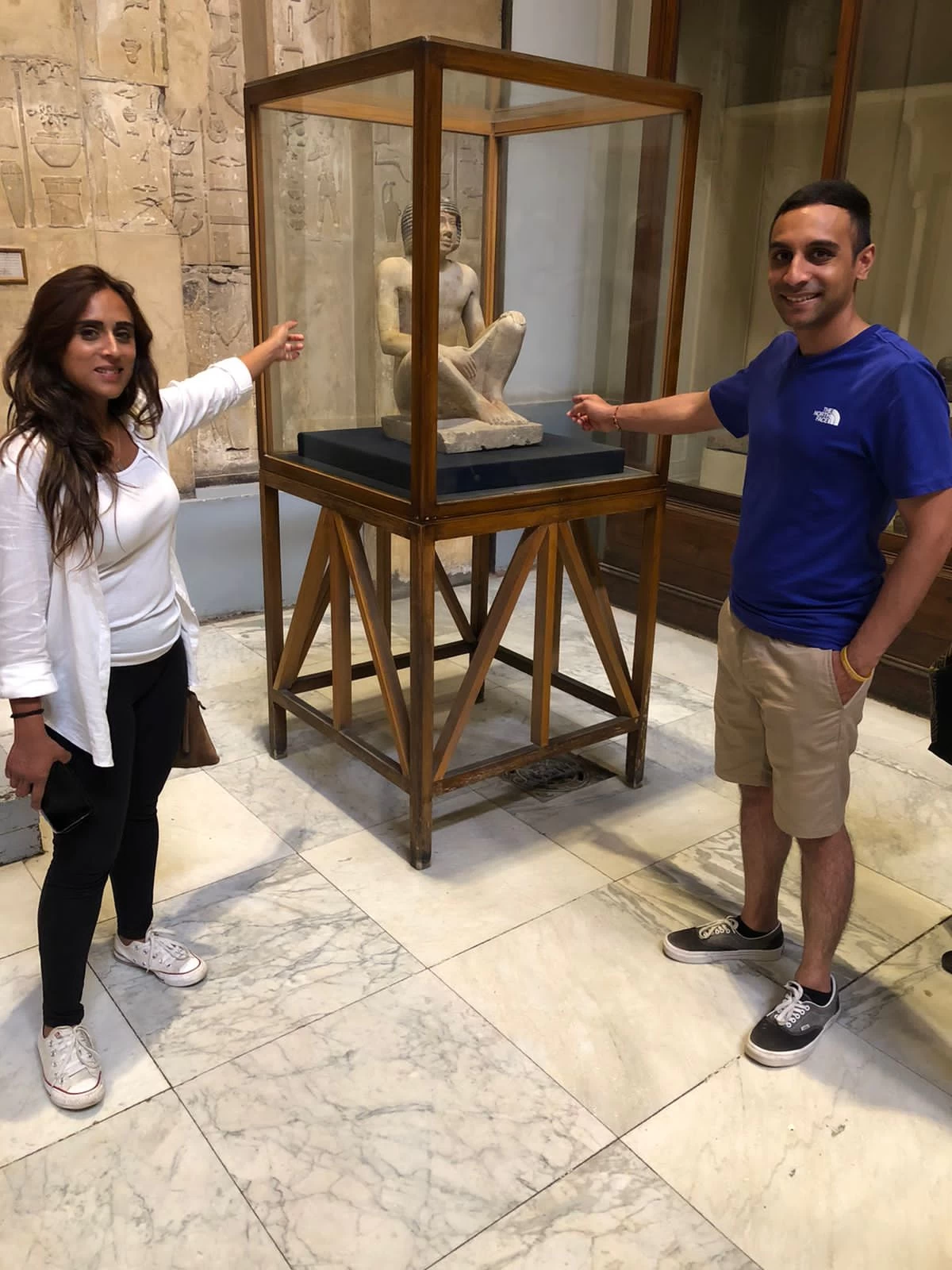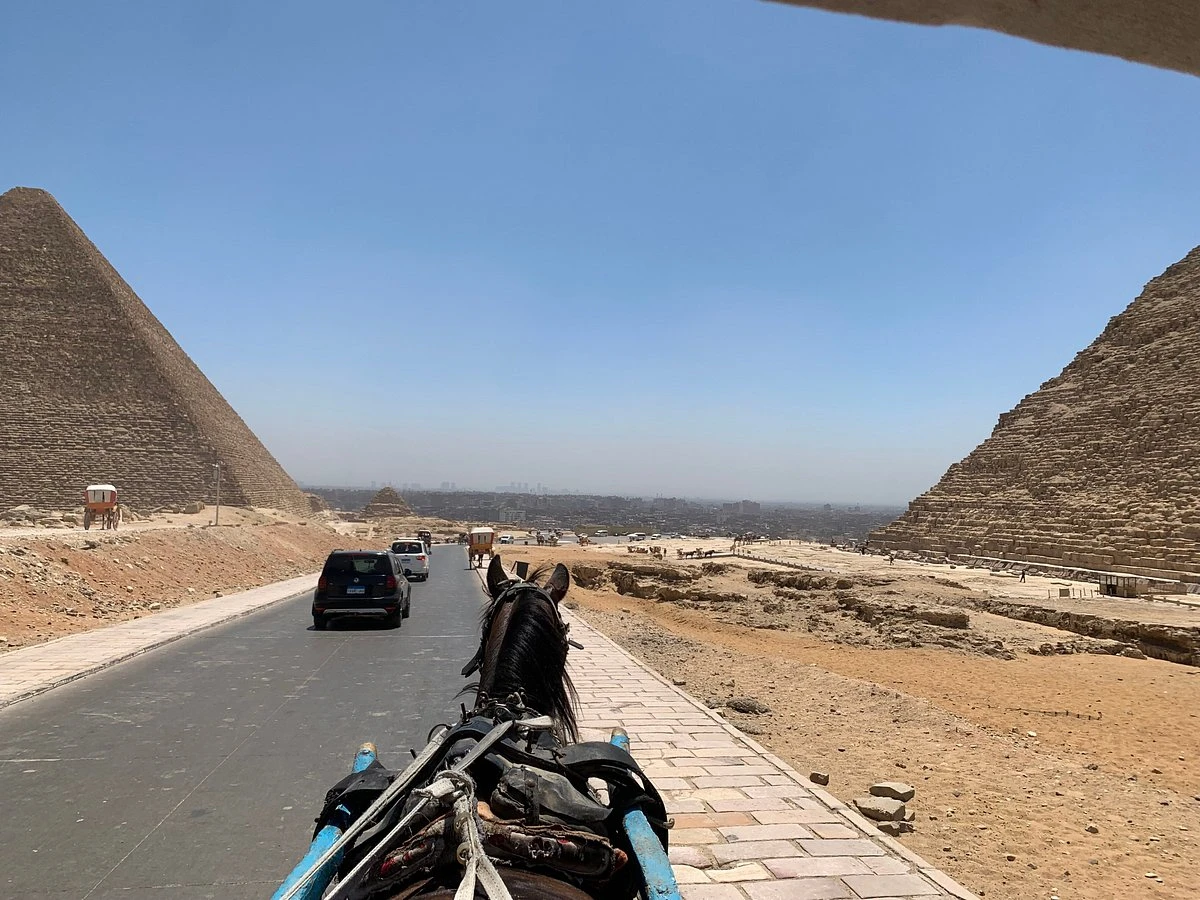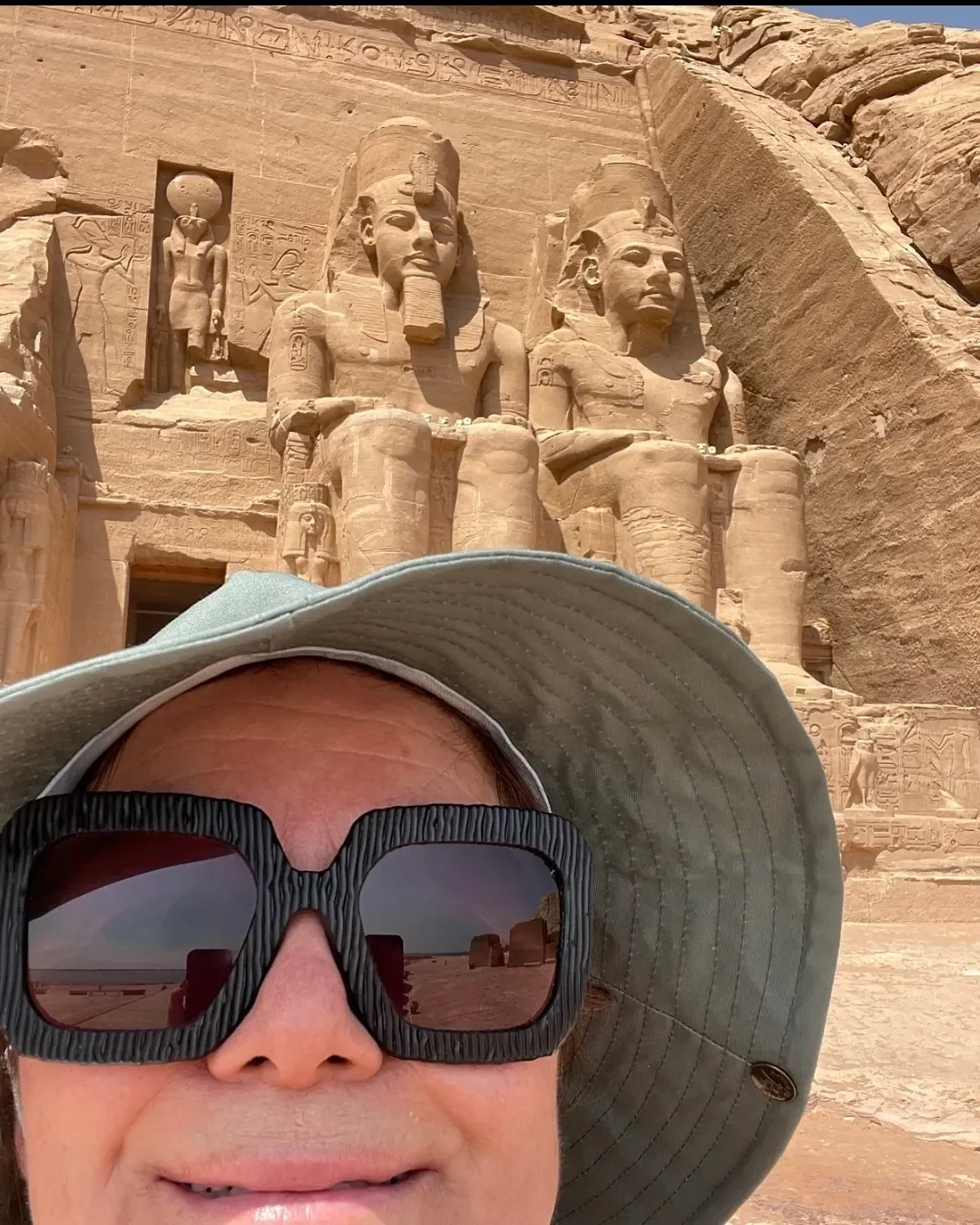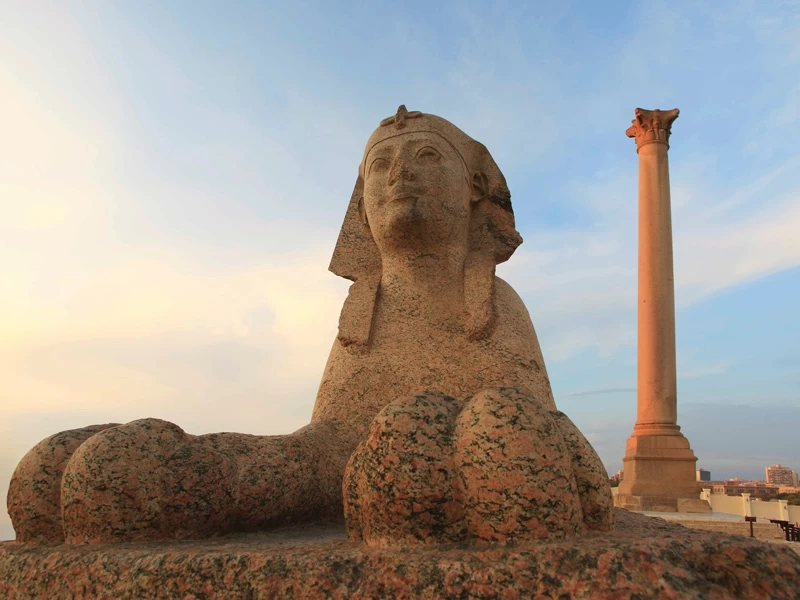-webp.webp)
3 Theories on How the Pyramids Were Built
Have you ever wondered how ancient Egyptians built those great pyramids, which amaze us today? 3 Theories on How the Pyramids Were Built, revolutionized how the world thought about these marvelous architectural creations. Recent archaeological discoveries and scientific analysis show that combined ingenious engineering techniques, sophisticated tools, and remarkable organizational skills built the pyramids. The theories challenge long-held beliefs about ancient construction. They question everything from the selection of limestone to water transport. Explore 3 Theories on How the Pyramids Were Built with Us; these theories, backed by interesting archaeological evidence, challenge our understanding of ancient construction methods. Whether you’re a history enthusiast or curious about ancient engineering, learn how builders constructed these incredible structures, one stone at a time, as we explore fascinating theories that rewrite history.
The Mystery of the Pyramids: A Historical Perspective
First, let‘s set the stage. During Egypt’s Old Kingdom, over 4,500 years ago, builders constructed the famous pyramids in Giza. The largest of them all is the Great Pyramid of Giza, which was built for Pharaoh Khufu. The height is an astonishing 481 feet, with over two million limestone blocks weighing several tons each. How could a civilization that did not have cranes or trucks do this? That’s where the theories begin.
Theory 1: The Ramp System
The first, and one of the most widely accepted theories, is that workers built the pyramids using ramps. This, however, is not as simple as it sounds. Experts propose various ramp designs, each with its challenges and advantages.
Straight Ramp
The straight ramp theory suggests that a massive, linear ramp was built extending from the ground to the pyramid. Workers dragged the heavy stones up the ramp to place them.
- Pros: It’s a straightforward concept and fits with ancient Egyptian knowledge of engineering.
- Cons: The ramp would have been almost as large as the pyramid itself, requiring enormous resources and space.
Zigzag Ramp
Another version involves a zigzagging ramp along the pyramid’s sides. This design would have required less material and space compared to a straight ramp.
- Pros: It’s more practical and would have been easier to dismantle after construction.
- Cons: Turning heavy stones at sharp angles might have been tricky.
Spiral Ramp
Finally, some theorists believe in a spiral ramp that wrapped around the pyramid as it rose.
- Pros: It’s efficient and keeps the pyramid accessible at all levels during construction.
- Cons: There’s little archaeological evidence to support this idea.
Theory 2: The Internal Ramp
The second theory takes the ramp idea a step further—literally inside the pyramid. French architect Jean-Pierre Houdin proposed that an internal spiral ramp was used. According to this theory, the Egyptians built the pyramid from the inside out, carving a path within the structure to transport stones upward.
- Pros: It eliminates the need for a massive external ramp, and the internal design could have been hidden within the pyramid.
- Cons: This theory requires a complex and precise architectural plan, something that would have been a significant challenge for the time.
Interestingly, some scans of the Great Pyramid have revealed voids and passageways, which might support this theory. Could the pyramids be hiding more than we know?
Theory 3: Water Power and Buoyancy
This third theory is one of the most unconventional and intriguing. It suggests that the Egyptians used water to transport and position the massive stones. The idea? Buoyancy and hydraulic systems made the process more manageable.
Floating Stones Along the Nile
According to this theory, the limestone blocks were floated along canals connected to the Nile River, which was closer to the pyramids during that era.
- Pros: It explains how the Egyptians moved such heavy stones from quarries far away.
- Cons: While moving stones via water seems plausible, it doesn’t fully explain how they were lifted and placed.
Hydraulic Lifting
Another variation proposes that water-filled chambers inside or around the pyramid were used to lift the stones. Workers would have manipulated water levels to position the blocks.
- Pros: This is a creative solution and aligns with the Egyptians’ advanced knowledge of irrigation and hydraulics.
- Cons: There’s no direct evidence of such a system, making it more speculative than the other theories.
Ancient Egyptian Engineering Marvel

The ancient Egyptians showed remarkable engineering prowess that continues to astound modern experts. Their sophisticated understanding of mathematics, geometry, and construction techniques enabled them to create structures that have endured for millennia.
Mathematical Precision and Planning
The ancient builders showcased exceptional mathematical skills in pyramid construction. They achieved near-perfect alignment with cardinal directions, with some pyramids deviating by less than 0.5 degrees from the true north. This precision required advanced knowledge of astronomy and surveying techniques.
The pyramids’ base measurements were accurate, with sides differing by mere centimeters despite spanning hundreds of feet. This level of precision suggests careful planning and sophisticated measuring tools.
Advanced Material Science
Ancient Egyptian engineers had a deep understanding of the different stone properties. They chose limestone for the primary structure and used harder types, like granite, for features such as burial chambers. Their choice was based on understanding material strength and durability.
They developed specialized techniques for cutting and shaping stones, using copper chisels for softer limestone and more advanced methods for harder granite. The precise fitting of massive stone blocks, some weighing up to 80 tons, speaks to their mastery of stone-working.
Innovative Construction Solutions
The builders developed the ingenuity to solve problems in construction. They harnessed water to reduce friction in moving enormous stones and constructed sophisticated ramp systems for vertical transportation; recent evidence even suggests they may have used internal ramps within the pyramid structure itself.
The mortar between the stones was so effective that very often, even today, it’s impossible to insert a knife blade between blocks. The analyses prove they manufactured a particular gypsum-based mortar that yielded strength and flexibility.
Ancient Egyptian engineers possessed advanced mathematical knowledge, material science expertise, and innovative construction skills. These skills allowed them to create works of architecture that have survived over 4,500 years.
Foundation and Materials

Ancient Egyptian engineers were outstanding: they comprehended the indispensable basis needed for their huge pyramids. Their precise care in ground preparation and in choosing appropriate material created the real prerequisites for these structures to survive into the millennia.
Ground Preparation Techniques
The Egyptians had to level the bedrock foundation before laying a single stone. Workers cut channels into the limestone. Workers flooded these channels to identify areas needing further excavation to level the site. This ingenious approach worked well, with measurements on this base showing less than one inch of deviation.
The builders also devised a clever drainage system beneath the foundation. They cut channels and placed limestone blocks in such a way that water could not collect, which would have weakened the pyramid.
Strategic Material Selection
The choice of construction materials was far from random. The ancient builders used limestone as their primary building material because it was available in quarries and had very good structural properties. The builders selected the outer casing stones from the Tura quarries because their fine white limestone created a smooth, reflective surface.
In comparison, the foundation blocks used much larger and rougher pieces of limestone quarried right there at the site. Massive, these blocks-most weighing a whopping 15 tons-laid on the site to balance the enormous weight of the pyramid on the bedrock beneath it.
The mortar used between stones was a sophisticated mixture of gypsum, sand, and limestone dust. This special blend not only bonded the blocks together but allowed for minimal settling while maintaining structural integrity. Recent analysis has shown that this ancient mortar is like modern Portland cement in its binding properties.
Archaeological evidence in worker villages suggests that selecting materials was a year-round process, with specialized teams dedicated to identifying and marking the best stones for different parts of the pyramid. The systematic approach to material selection and preparation was crucial to lasting the pyramids.
Key Takeaway: the durability of the pyramids is because of the combination of the sophisticated ground preparation by the Egyptians, using their advanced leveling techniques and selected limestone with special mortar.
Evolution of Pyramid Architecture

The evolution of pyramid architecture is an amazing story. Ancient Egyptians developed their skills over centuries, progressing from mastaba tombs to the towering pyramids that remain one of humanity’s greatest architectural achievements.
Early BeginningsStep Pyramids and Mastabas
It began with lowly mastabas-flat-roofed, rectilinear structures of mud bricks. Around 2630 BCE, the innovative architect Imhotep built the world’s first step pyramid for King Djoser. This was accomplished by stacking six progressively smaller mastabas. In this revolutionary way, the Egyptians demonstrated their increased competence in handling stone, marking a crucial moment in architectural history.
Djoser’s step pyramid was such a success that subsequent pharaohs also wanted to try their hand at the idea. With each try, builders learned new lessons as they figured out how to work with different materials and refine their building techniques. These early experiments were the essential forerunners to the more ambitious projects that would follow.
The Rise of True Pyramids
Another leap in architectural innovation is changing step pyramids to smooth-sided structures. King Sneferu, the first pharaoh of the 4th Dynasty, was a key figure. Three pyramids, the Bent Pyramid, the Red Pyramid, and the Medium Pyramid, belonged to him and stood as evidence of the experimental phase that led to the perfect pyramid form.
Especially the Bent Pyramid tells an interesting story of trial-and-error learning. Its unusual shape-a dramatic change in angle partway up resulted from structural problems that forced ancient builders to change their plans mid-construction. This “mistake” provided valuable lessons about optimal building angles and distributing stress.
The Red Pyramid, built afterward, learned from these mistakes and became the first successful true pyramid. Its completion started the golden age of pyramid construction, peaking in the Great Pyramid of Giza—a masterpiece that stood as the world’s tallest human-made structure for over 3,800 years.
This process of evolution saw the perfecting of geometry, engineering principles, and construction techniques by ancient Egyptian architects. They could work out angles of great precision, devise superior methods for cutting and moving stone blocks into place, and build aligned structures that stood through many a millennium.
Pyramid architecture in Ancient Egypt progressed from simple mastabas through complex geometric shapes that displayed ever-advancing engineering and design skills. This journey continues to amaze even the modern mind.
When Were Ancient Pyramids Built ?
Revolutionary Construction Methods

Ancient Egyptian builders were true innovators, devising revolutionary methods that would change construction forever. Their ingenuity and resourcefulness gave way to a technique that to this day amazes engineers and archaeologists.
The Internal Ramp System
Recent archaeological discoveries have uncovered one interesting method of construction: the internal ramp system. In contrast to conventional external ramps, this fresh approach involved building the pyramid from the inside out. According to the research by French architect Jean-Pierre Houdin, workers built a spiral ramp that wrapped around the interior of the pyramid to move enormous stone blocks.
This internal way had several uses. Laborers could raise materials while still maintaining the integrity of the pyramid. The angle of the ramp, about 7 degrees, would make it easier to pull the heavy stones with ropes and wood rollers. Archaeological evidence, such as breaks in the pyramid structure and internal chambers, supports this revolutionary theory.
Advanced Water-Based Transportation
Perhaps the most ingenious aspect of pyramid construction was the sophisticated water transport system. Archaeological findings near the Giza plateau reveal that there were ancient waterways and harbors for construction. These channels allowed builders to float massive stone blocks closer to construction sites, reducing the physical labor required for transportation.
The ancient Egyptians developed a complex system of canals that linked quarries with construction sites. Yearly Nile floods filled these waterways, thus creating natural highways for transporting stones. Recent geological studies have identified traces of these ancient channels, confirming their existence and strategic placement.
According to engineers, water transport may reduce the force necessary for stone movement by as much as 90%, in contrast with land transport methods. The efficiency provided the builders an opportunity to move bigger blocks and speed up construction compared to what was supposed.
In front of the pyramids, finding various ancient boat pits containing well-preserved vessels of wood confirms this aspect of an organized transport network. Builders constructed the boats to carry heavy stone loads and maintain stability in shallow waters.
Key Takeaway the construction skills that the ancient Egyptian builders introduced through internal ramps, water-based transport mechanisms, and other technological innovations in building techniques prove their skills in engineering.
The Ramp Theory Revolution

The ingenuity of the ancient Egyptians construe pyramids fascinated scholars through the ages. Recent archaeological discoveries have changed our understanding of how these gigantic structures were built, especially regarding the use of ramps.
Internal Ramp Discovery
In 2007, French architect Jean-Pierre Houdin found that changed our perception about constructing pyramids. Using advanced 3D modeling and thermal imaging, Houdin detected an internal ramp system spiraling up through the Great Pyramid of Giza.
This internal ramp theory suggests that the ancient builders used an external ramp for the first third of the construction. As the pyramid grew taller, they switched to an internal ramp system wrapped around the core of the structure. This ingenious approach resolved many of the logistical mysteries that had puzzled researchers for decades.
Evidence Supporting the Theory
Archaeological evidence supports this internal ramp theory. For example, thermal scanning of the Great Pyramid showed temperature differences that suggest internal passageways. “Also, archaeologists found remains of limestone blocks arranged in spiral structures telltale sign of Houdin’s ramp system.
The internal ramp theory also explains how the ancient Egyptians maintained such precise measurements and alignment throughout construction. Because of the design of the ramp, it would allow builders to move heavy stones to great heights while maintaining perfect corner angles and level surfaces.
Modern engineering analysis has validated this as a viable construction method. Computer simulations show the internal ramp system could have supported the weight of limestone blocks and provided a practical means of moving materials to higher levels of the pyramid.
Recent excavations have revealed tool marks and construction features that are consistent with this hypothesis. These include:
Recent excavations have uncovered tool marks and construction features that align with this theory. These findings include:
- Traces of ancient wooden sleds used to transport blocks
- Remnants of gypsum mortar used to reduce friction
- Evidence of corner stations where blocks were turned
- Marks indicating counterweight systems
The discovery of ancient papyri at the Red Sea port of Wadi el-Jarf has provided additional support. These documents detail transporting limestone blocks and mention specific construction techniques that align with the internal ramp theory.
Key Takeaway: The internal ramp theory, as proposed by modern technology and archaeological evidence, explains how ancient Egyptians could construct pyramids with remarkable precision and efficiency.
Modern Archaeological Discoveries

Recent excavations and advanced technology have changed our perception of how the ancient Egyptians could build such magnificent pyramids. These discoveries continue to break previous assumptions and give concrete evidence of their remarkable engineering capabilities.
The Wadi el-Jarf Papyri
Until the world’s oldest papyrus documents were found at Wadi el-Jarf in 2013. These 4,500-year-old papers outlined the daily activities of workers on the Great Pyramid of Giza: how stones were moved in place and how foods were distributed to workers.
Advanced Imaging Technologies
Satellite imagery and LiDAR scanning today reveal construction sites and quarries that were unknown and surrounded the pyramids. These technologies have allowed archaeologists to trace ancient transportation routes and pyramid ramps. This provides tangible evidence of the advanced engineering skills used by ancient builders.
Excavation of Worker Village
Recent excavations at Beit El-Ghurab have uncovered extensive worker settlements, complete with bakeries, workshops, and sleeping quarters. These findings contradict earlier theories about secondary labor, instead suggesting a well-organized workforce of skilled craft workers who received regular wages and medical care.
Material Analysis Breakthroughs
Advanced scientific analysis of pyramid stones shows that ancient Egyptians indeed applied advanced techniques in bonding limestone blocks. Evidence for specialized gypsum-based mortar has been traced, showing a deep understanding of properties and construction techniques.
Evidence for Construction Tools
Archaeological excavations have discovered a host of copper chisels, granite hammers, and measuring devices around the vicinity of pyramid sites. The incredible accuracy of these instruments’ form shows the technological skill of the ancient Egyptian builders, who could work with both soft limestone and hard granite.
Recent archaeological discoveries—from ancient papyri to modern imaging—provide concrete evidence of skilled workers and advanced engineering in pyramid construction. This supports the idea of sophisticated construction methods.
Alternative Construction Theories

Over the years, researchers have put forward several alternative theories to explain the incredible feat of pyramid construction. These theories are popular among the public but hold much water in terms of scientific evidence.
Ancient Alien Hypotheses
Some theorists even suggest aliens helped the people build the pyramids, citing the perfect orientation and enormous size of the structures. However, archaeological findings show a gradual development of architectural knowledge and skills in Egyptian construction and thus dismiss these hypotheses.
Lost Civilisation Claims
There is also the popular theory that an advanced prehistoric civilization design built the pyramids. However, accumulated archaeological evidence shows the gradual evolution of Egyptian engineering achievements, starting with simple mud-brick constructions and culminating in magnificent stone structures.
Supernatural Powers and Levitation
Some alternative theories even suggested that the ancient Egyptian priests used magical powers or levitation to move these enormous stone blocks. These ideas often result from misunderstandings of hieroglyphic texts and religious symbolism, disregarding well-documented physical evidence regarding construction methods.
Modern Scientific Understanding
Contemporary research has documented the ingenious yet complete human methods used in pyramid construction. Archaeological discoveries such as worker villages, tool marks, and construction ramps present clear evidence of the sophisticated yet practical techniques employed by ancient Egyptian builders.
Historical Perception
While these alternative theories permeate popular media, they often eclipse what is so astonishing about ancient Egyptian engineering. These theories sometimes diminish our appreciation for the amazing organizational and technical skills displayed by the pyramid builders.
Key Takeaway Alternative Pyramid Construction Theories While alternative pyramid construction theories are intriguing, they lack scientific confirmation. Archaeological evidence verifies the ingenuity of ancient Egyptian builders employing sophisticated yet practical means of construction.
Why Understanding the Construction Matters

The techniques behind the pyramids' construction offer profound insights into the technological and organizational prowess of ancient Egyptians. These structures served as tombs, aligning with the Egyptians’ religious beliefs, and symbolizing their mastery of engineering and astronomy.
Astronomical Precision
Each side of the Great Pyramid is aligned to the cardinal points with extraordinary accuracy. Builders achieved this by observing the stars, particularly the rising and setting of the northern star.
Strategic Location
The pyramids were strategically constructed on the west side of the Nile River, where the land was elevated to avoid flooding and close to resources and labor.
How Much Does a Trip to Egypt to See the Pyramids Cost ?
Conclusion
The construction of the pyramids remains one of the most fascinating achievements of ancient civilizations. By exploring 3 Theories on How the Pyramids Were Built, we gain a deeper appreciation for the ingenuity, skill, and determination of the ancient Egyptians. These theories not only shed light on the past but also inspire us to think creatively about overcoming challenges in modern engineering. So, next time you marvel at the Great Pyramid of Giza, remember the mysteries it holds and the enduring allure of the 3 Theories on How the Pyramids Were Built.

.webp)













-webp.webp)





-webp.webp)





-webp.webp)
-webp.webp)
-webp.webp)






-webp.webp)
-webp.webp)

-webp.webp)
-webp.webp)
-webp.webp)
-webp.webp)
-webp.webp)
-webp.webp)



-webp.webp)






-webp.webp)
-webp.webp)










.png)

